April 27
Met in the lobby at 6:15 for a pre-dawn walk to catch the early light. Great opportunity to photograph old Havana just waking up.
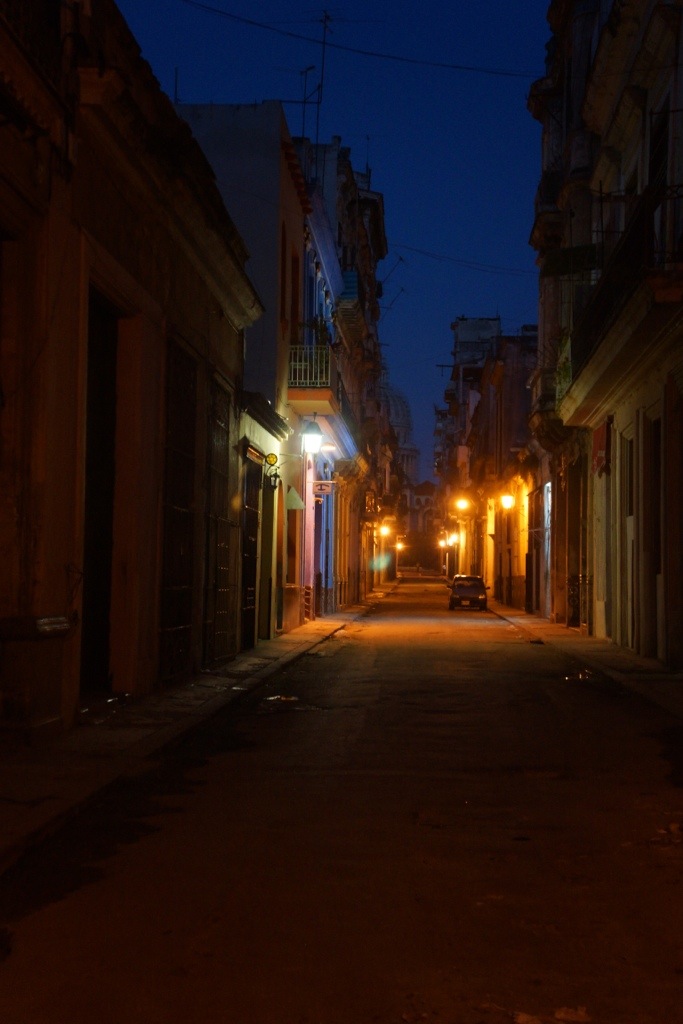
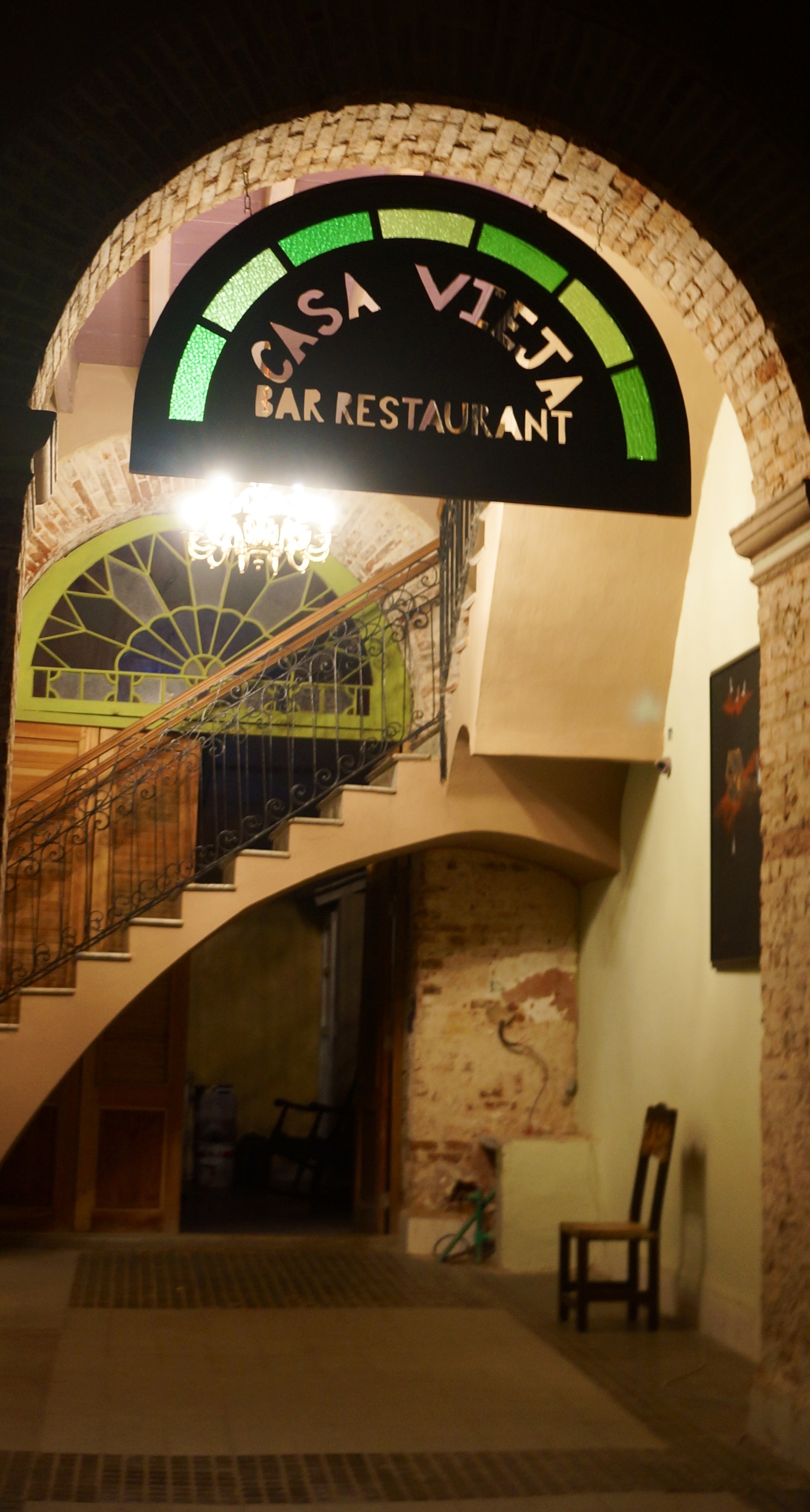
Over to the bay to photograph some fishermen, then wend back to the hotel for buffet breakfast on the pleasantly cool rooftop. Hour to relax before meeting again at 9.
Dustin explains that any transaction with the government takes place in the local currency of pesos. Cubans receive monthly ration cards that allow them to buy modest amounts of rice and other staples at the markets. These cards used to provide for much more, but are being scaled back.
Prior to the revolution in 1959, Cuba was effectively under US control, with Batista acting as a puppet head for US corporate interests. Many people fled prior to the revolution, after which everything was nationalized, including many of what used to be fine single-family homes in old Havana. Prior to the collapse of the Soviet Union in 1991, Russia provided everything to Cuba in exchange for sugar and sugar products. After the collapse, the Cuban economy fell to pieces and hungry people tried to flee by boat to the US and elsewhere. The embargo of Cuba by the US and prohibition of travel there has had a big effect on Cuba, and is part of the reason why there are some 55,000 pre-1959 American cars in working order in Cuba. Today, the biggest share of tourism comes from Canada, though there are many direct flights to Cuba from Europe.
Meeting at 9, we break into two groups. I’m in one led by Jorge, the Cuban photographer, and Nevada. We take a very long walk in the old Havana area, stopping to talk to people, looking into building vestibules and generally soaking in the atmosphere of Old Havana. An enormous amount of restoration work has been going on for some ten years. Before and after photos attest to significant progress. It’s hard to imagine that Havana will not eventually be restored to its former grandeur, as one of the world’s great destinations.
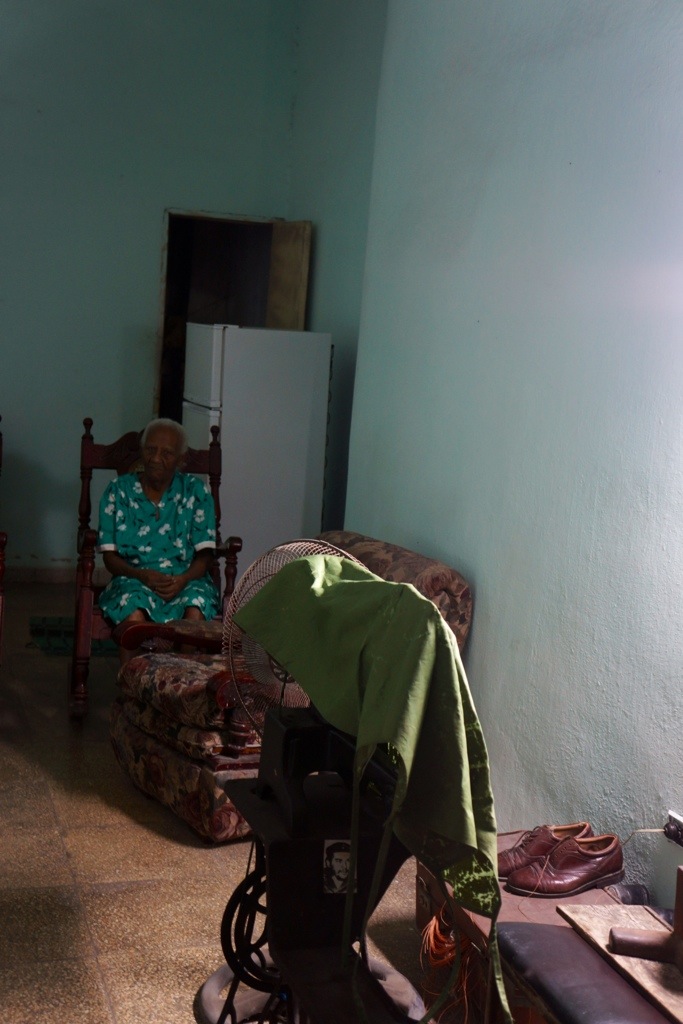
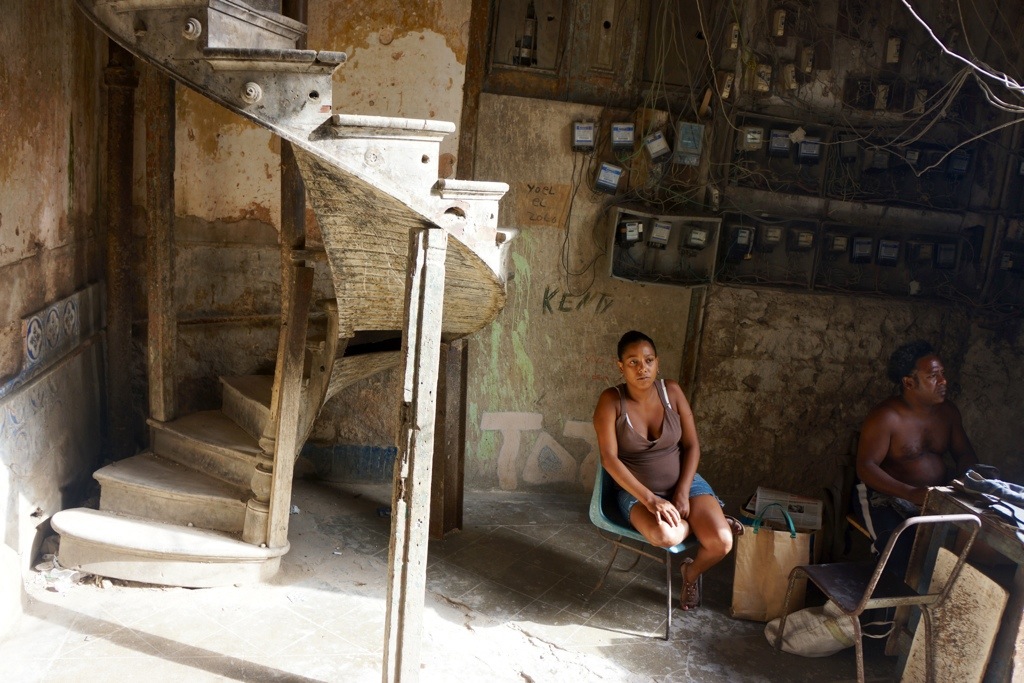
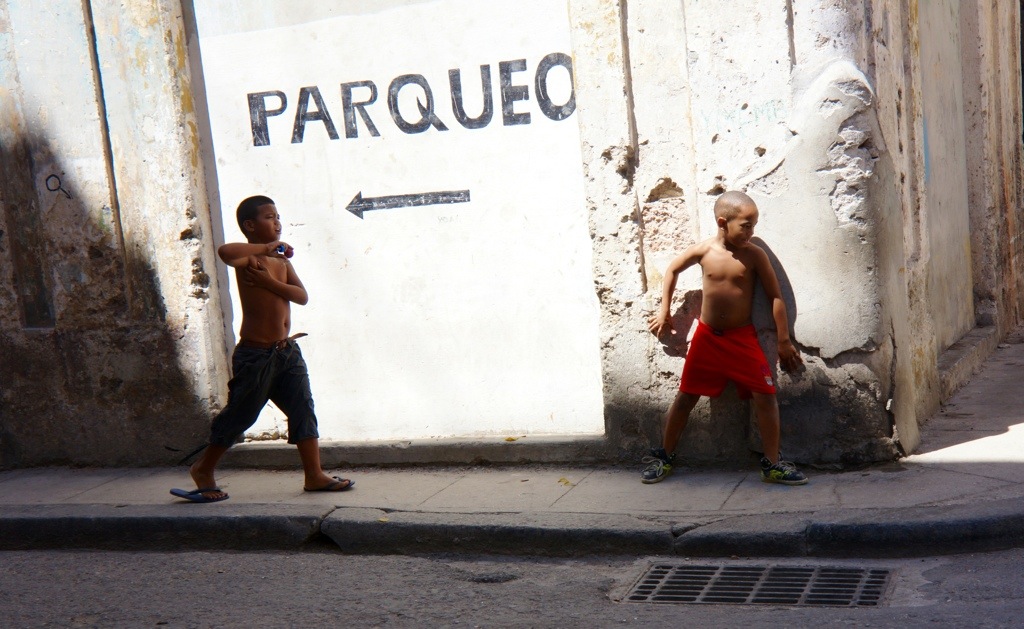
We stop in at a Catholic church, Church de la Merced, which doubles for people descended from Africans who are in the Santeria religion, which has blended IRS gods with the icons of Catholicism. Small shops in the area sell artifacts for use in the Santeria religion. We see initiates dressed all in white, with white umbrellas. Many babies are being baptized at the church.
We stop by a place where young boxers are being trained, put through their laborious exercises by a trainer. We see them sparring, exercising, jumping rope, shadow boxing and punching bags. We take way too many photos of them.
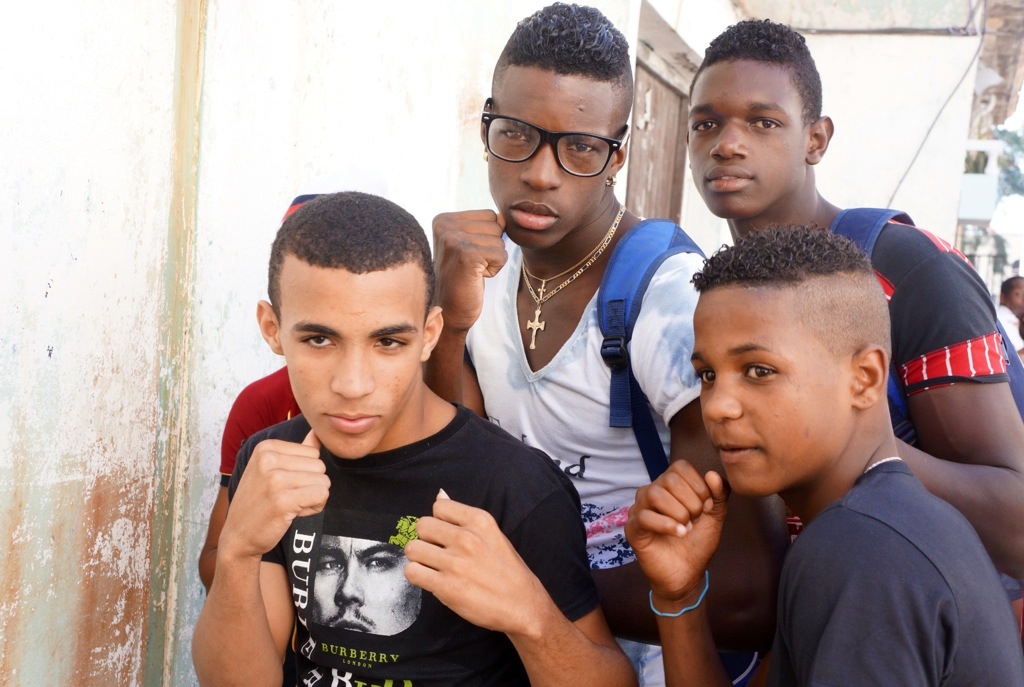

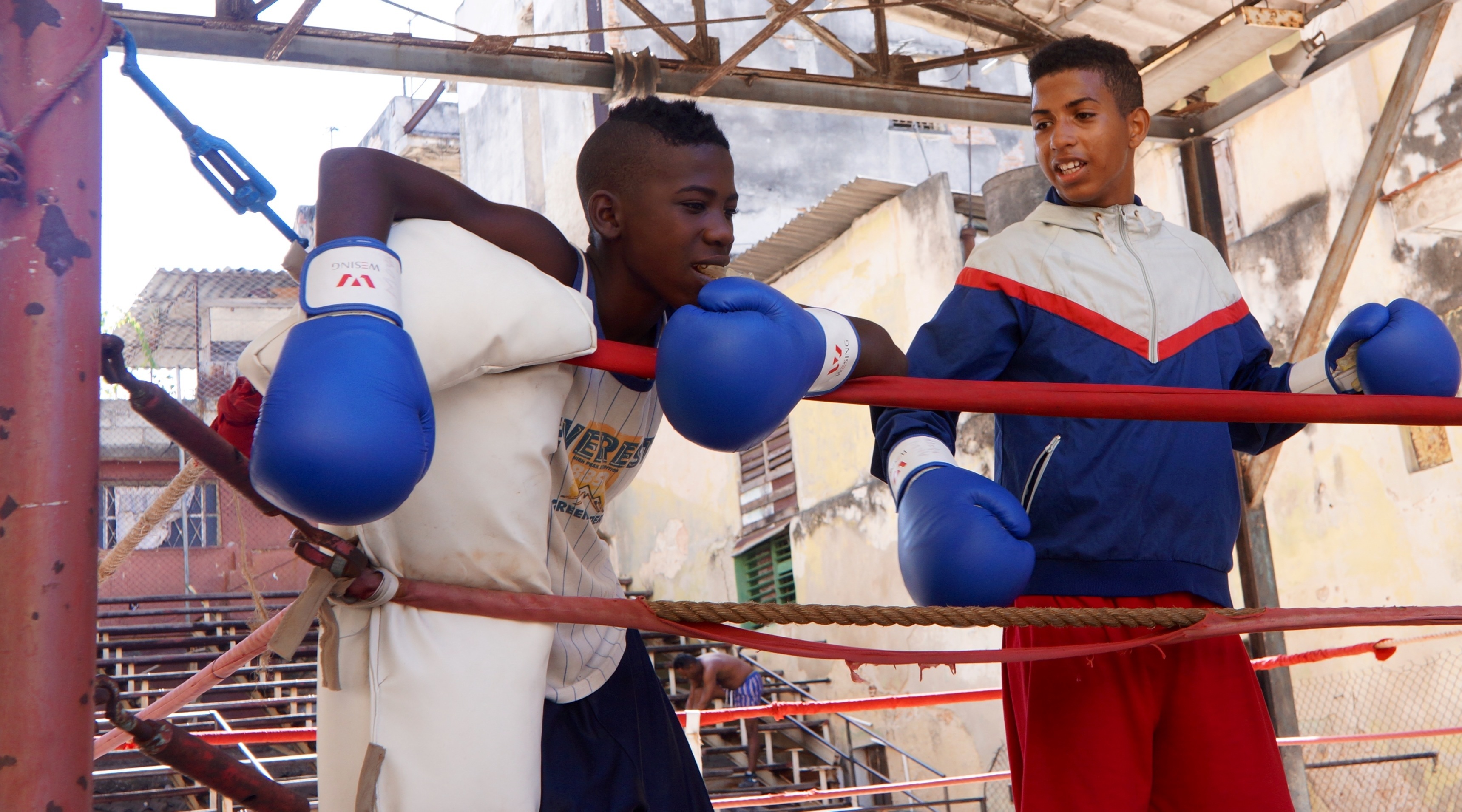
From there another sizeable walk to a third floor walk-up restaurant, El Asturianito, where food is plentiful and quite good and, more importantly, the beer is very cold. Slip off my shoes during lunch and am among the half of the group that opts to take bicycle taxis back to the hotel, rather than walk; a very good decision. Visit the room in the hotel that Ernest Hemingway used to stay in, a few doors down from my own. he wrote three books there, including Death in the Afternoon. A brief few minutes in the room before meeting in the lobby to board our bus.
We ride a fair distance to a tree-shaded square, Casa de Rumba, where dancers, singers and musicians will perform sambas, rumbas and other high-energy dances. It’s as interesting to watch the large crowd seated around the square, who are very into the music, singing and moving with it. Members of the audience, ranging from a baby to old ladies to everything in between participated, and some were terrific. Much of the dancing was overtly sexual. While it was quite fun, an hour and a half was more than I needed.
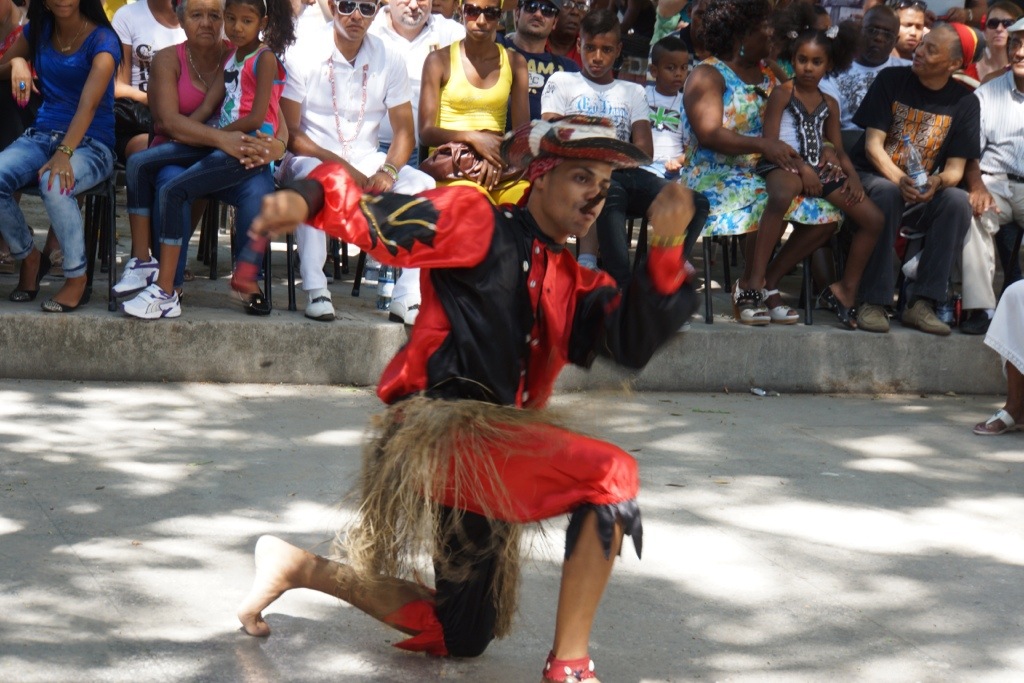

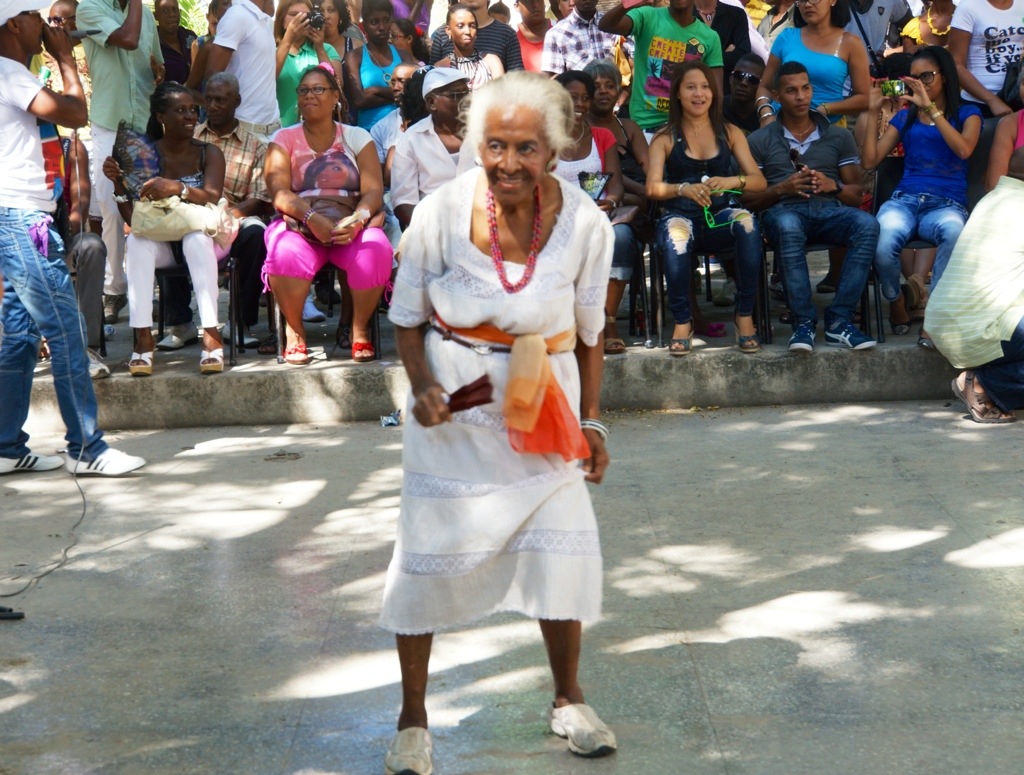
Dropped at Park Central Hotel, where I signed up for an hour of wifi, posted yesterday’s blog and checked emails. This may be the last post I can make while on the trip. Bummer.
Walked back to our hotel down Obispo, a main walking street, loaded with people. Old Havana has a great feel to it. Greeted in the lobby by Nevada, who told me the water was out again, so sat down for a beer, looked at photos and caught up on today’s blogging.
Almost 8 PM, and still no water. I’m to meet most of the group in the lobby in 45 minutes, and then taxi out to see the show at the famous Tropicana night club. Prices in Havana have been very modest, but we’re blowing our budget tonight, spending 100 CUCs each (over $100) for front row seats. We may be a pretty smelly bunch. Miraculously, water (cold) materializes at 8:25, thus making getting into clean clothes plausible. The show at the Tropicana was spectacular, definitely worth the price. An open air night club that holds 1000, with stages on different levels around the grounds. Two hours of brilliant dancing, costumes and singing.
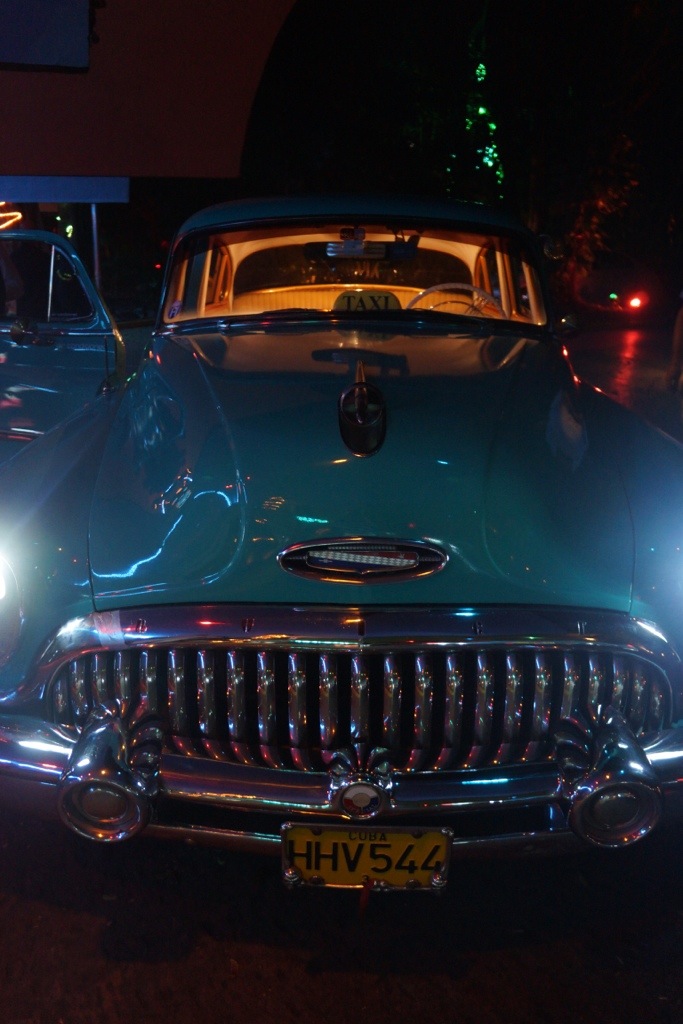
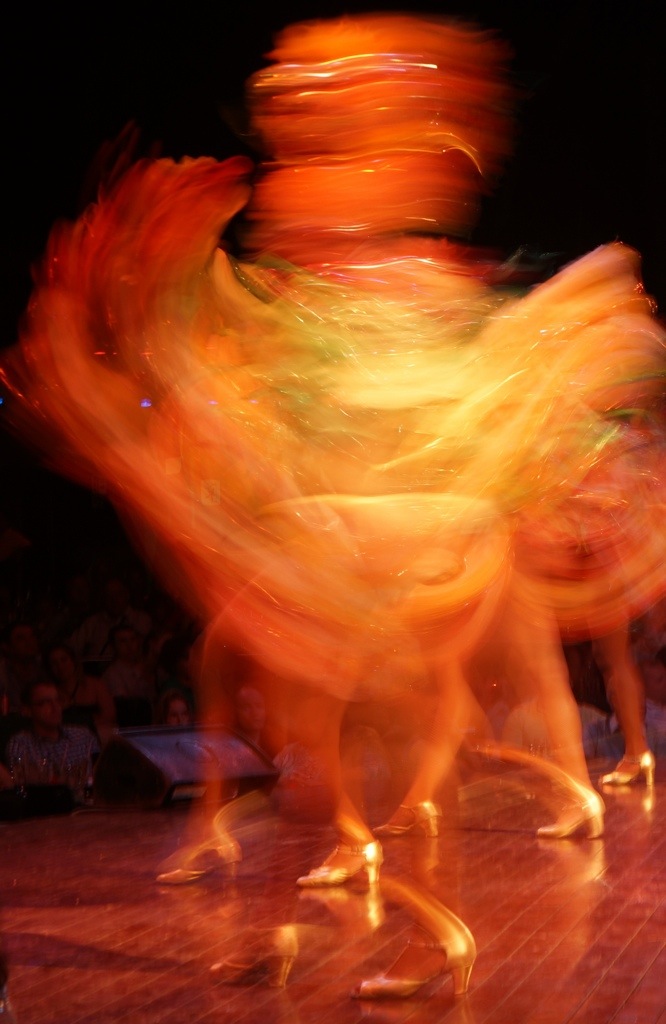
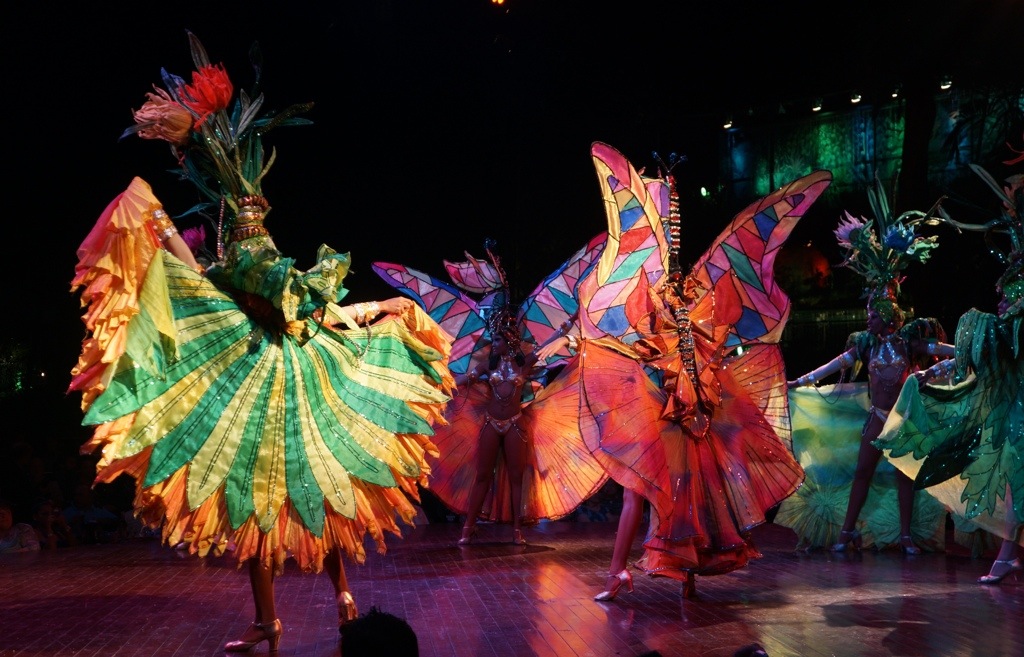
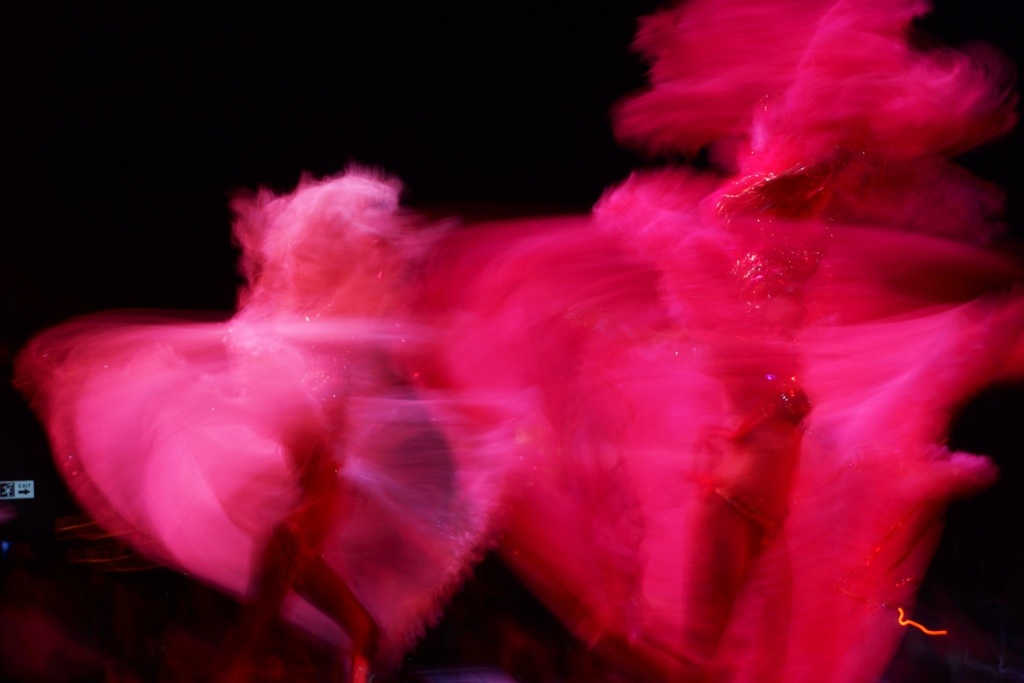
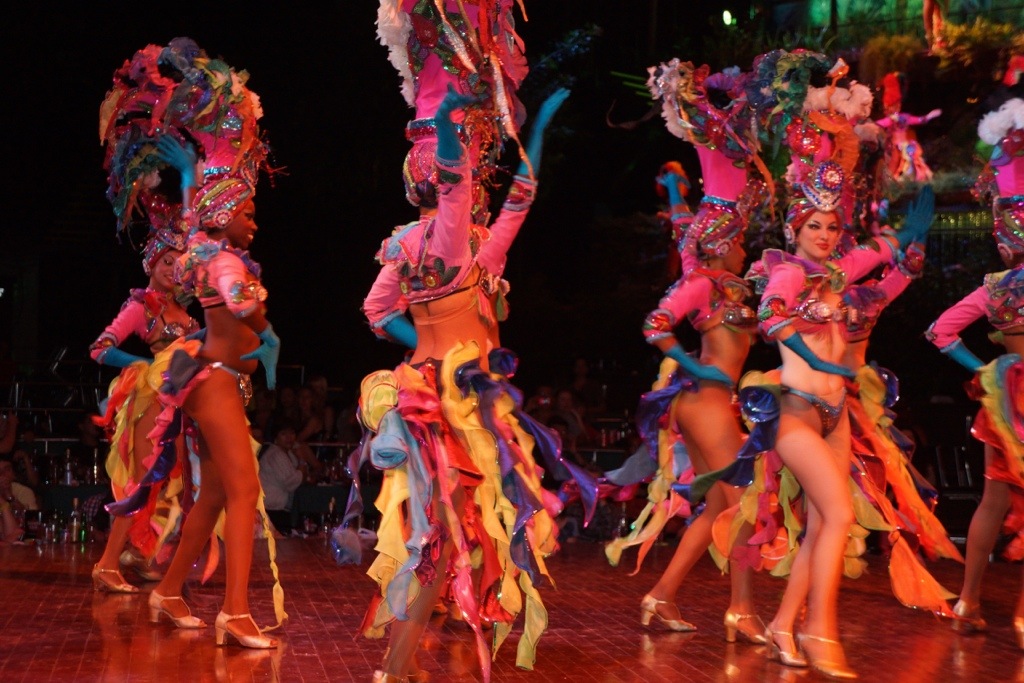
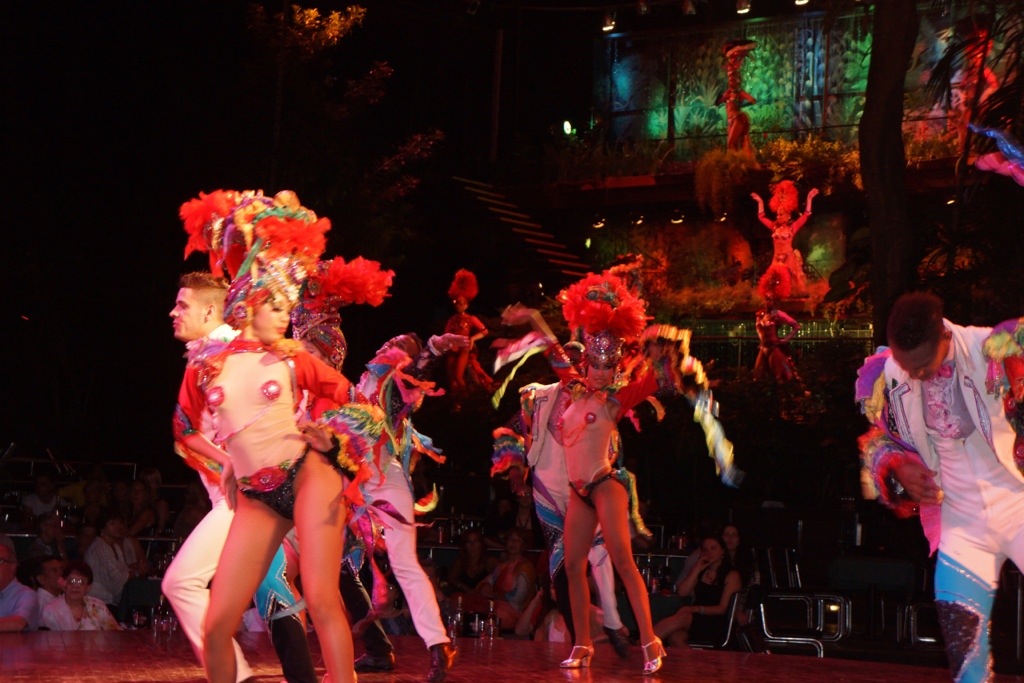
We are driven there and back by a driver in a 1951 Chevrolet that’s in great condition. Our driver speaks quite passable English, has medical training, owns a farm and has relatives in the U.S. He hopes for better relations; we are not enemies.
April 26
Met group in lobby. Went into lobby Starbucks for coffee and came out to find the group had left on shuttle to airport, my luggage sitting in the lobby. Tough group. Called Nevada on her cell and took next shuttle to terminal. Hour and a quarter in various lines, overweight luggage fee of $44, through security and hour and a half before our packed charter jet departs for Havana. The plane is filled with many Cubans and with other groups, including alumni from Yale and another, I think, from Stanford.
Photo thoughts. I’ll be shooting RAW and JPEG for the first time on this trip, having previously shot only the latter. RAW files are much larger than the compressed JPEG files, thus allowing more possibilities in modifying them. Also have a hyper drive I bought, which will allow me to copy photos from the camera to it. Nevada (and others) had been mortified to learn that previously I’d had no backup on trips. Most others back up on a laptop, but I’m too lazy to lug one on trips. It’s interesting that other makes (Olympus and Fuji) of the smaller Sony camera that I began using last Fall in China are now being used by several others on the trip, including Nevada. Clearly, they are the wave of the future, as others in the group are looking at them longingly.
The flight is 45 minutes, so we arrive around 11:30, multiple customs and baggage lines with waits, but no real hassles. We’re met at the airport by our guide, Laura, and workshop representative, Dustin, and, after changing some (Canadian) dollars I’d brought because of better exchange rates for CUCs (pronounced “kooks”), the Cuban money used by foreigners, for something less than a dollar/CUC, we board our comfortable air conditioned bus. Laura explains that the main problems in Cuba are economic, and Cubans do whatever they can to earn CUCs, which are much more valuable than the Cuban pesos which they are allocated to buy essentials. I need to learn more about this.
We ride to a large restaurant, called El Aljibe, at which we have a good enough lunch of chicken, rice and black beans while being entertained by four musicians, below, and Nevada.
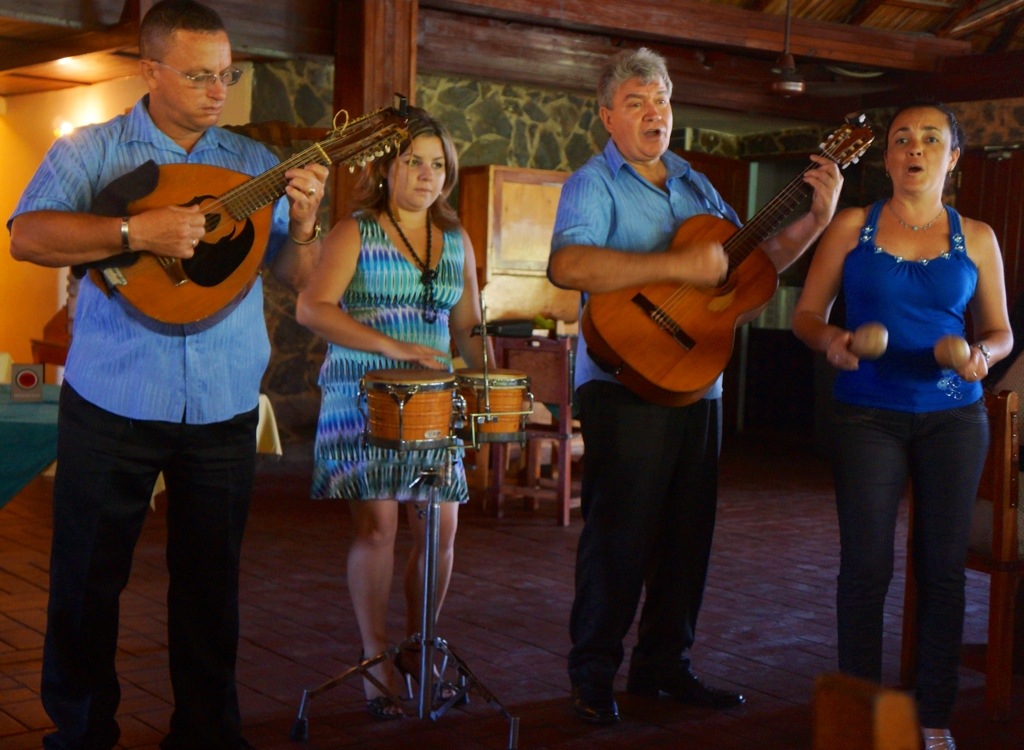
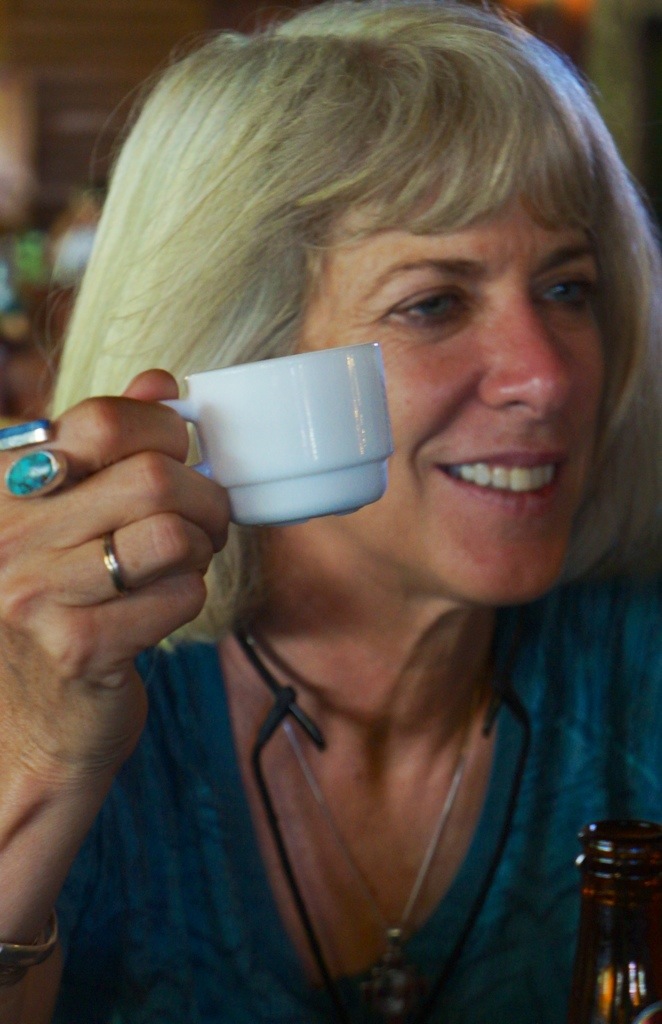
After lunch we have a bus ride to Revolutionary Square, which is aptly known as Revolutionary Parking Lot, opposite which a large wire sculpture of Che Guevara decorates a building, along with the famous words he wrote to Fidel, “Hasta la victoria, siempre,” or “until victory, forever.”
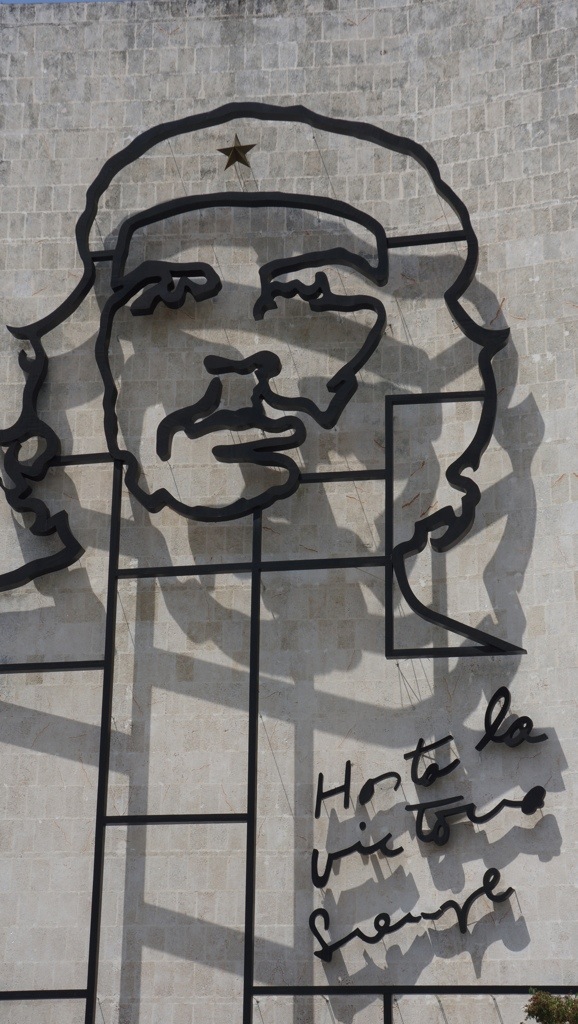
From there we drive to the well-known Hotel Nacional, a nicely-preserved hotel from the 1930s, where one can see pictures of everyone famous who has visited there, including this unlikely combo of Betty Grable and Stan Musial. We walk around the hotel and grounds.
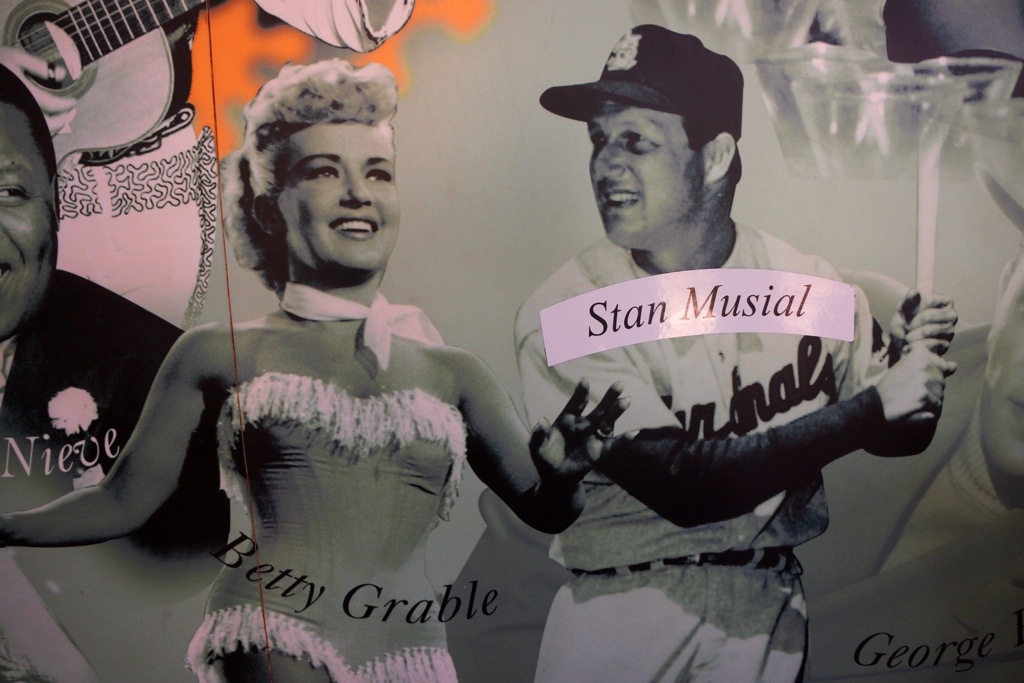
Laura points out some landmarks and gives us some history about Jose Marti, the poet and revolutionary organizer against the Spanish in the late 19th century, who was killed in 1895 and remains a national hero, with a big statue in Revolutionary Square (as well, Laura points out, as one in Central Park in New York). There’s something nice that Carol would appreciate about an airport being named after a poet, even if it wasn’t his poetry that inspired the honor. We drive to a spot a few blocks from our hotel, since driving restrictions in old Havana, where we are located, prevent the bus from getting there. We have some help with the luggage and walk over cobbled streets in hot, but not unbearable, weather to the hotel, where a lively crowd is hanging out around the bar. We’re served a welcome drink in the lobby and our room keys are handed out for the ride up in the small, old-fashioned elevator. Our hotel, the Ambos Mundos, is not nearly as fancy as the Nacional, but it has a “real” feel to it that I like. The room is simple, but adequate, and we have an hour and a half to relax before a lobby meeting at 6. I am able to operate the hyper drive, thanks to the instruction I got last week from Nirajan, the Nepalese young man who graduated from Northwestern and has been staying with us. Unfortunately, we do not have internet at the hotel, so posting blogs will be a challenge.
Meeting with Dustin, Nevada and our Cuban photographer Jorge gives us information about the next few days, which sound jam-packed and fun. While waiting for the meeting, I may have taken the first interesting photos I’ve made all day from our second floor meeting room window, looking down at small kids on the street who are being entertained by a mime dressed all in black.
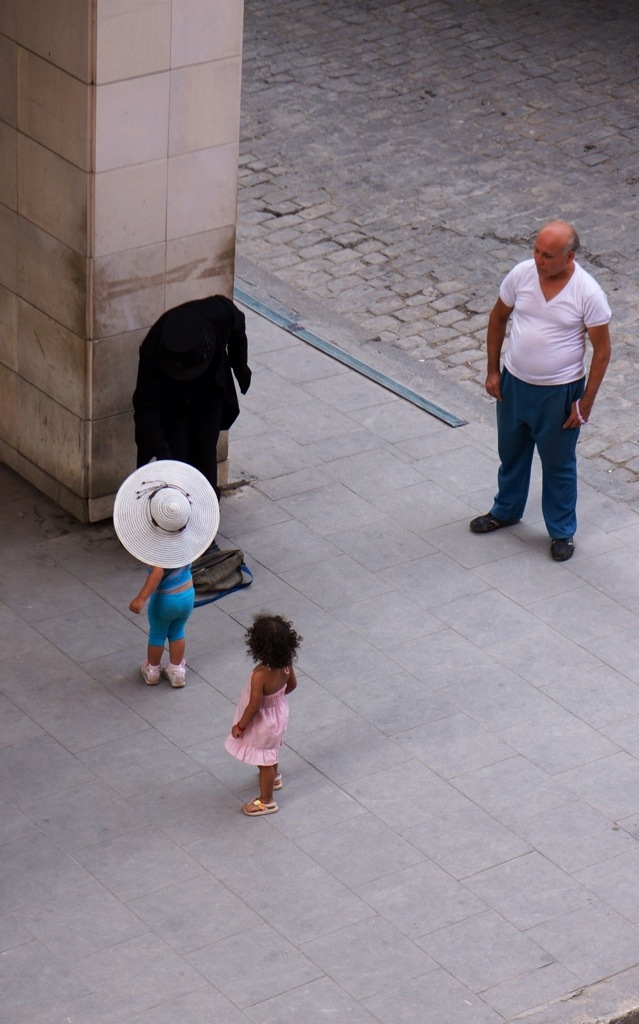
Our whole group is going to a nearby restaurant for dinner, except me, because I’m going to Beth Shalom services. Dustin puts me in a taxi with directions and I arrive at the reform synagogue and am greeted in Yiddish by the shamas and seated behind an Israeli pilot and his wife, with whom I chat before the service starts. The service is led by a young man and women, and I’m able to follow in both Hebrew and Spanish (somewhat), though almost none of the melodies are familiar. It’s interesting to experience prayers translated into Spanish and to reflect on how this happens in languages around the world, where we all read the same Hebrew, but experience different takes on it in translation. There is a kiddush and meal afterwards, but I don’t stay, opting to head back to try to catch the end of dinner with the group.
Getting back is an adventure. I first flag down a 1940s Chevrolet taxi, in which I become the fifth passenger, lodged between the driver and another man in the front row. Eventually the other passengers all get out and I’m left in the front seat with the driver, loud music pulsing from the car’s rear speakers, as he shifts gears and moves the powerless steering wheel around. My driver doesn’t quite know where I’m going, but drops me off at the Capitol. There I negotiate with another taxi, who takes me to the Plaza de la Catedral, which is not far rom the restaurant. A young man kindly walks me the couple blocks to the restaurant, where I have a beer and bread and butter with the others, who are finishing off what they said was a very good dinner in the quite attractive Dona Eutimia restaurant.
After dinner, we walk around the area, which is very charming and I take what I think may be a couple pretty interesting photos. It will be fun to walk around this area in the daylight. I walk with Doug and Henry. The former is represented in several photo galleries, including one in Santa Fe, and I pick up some interesting ideas, including shooting black and white JPEGs and RAW color at the same time. Once again, everyone is more experienced than I am, which is great, if a trifle intimidating (or might be, if I were easily intimidated, which I’m not).
/>
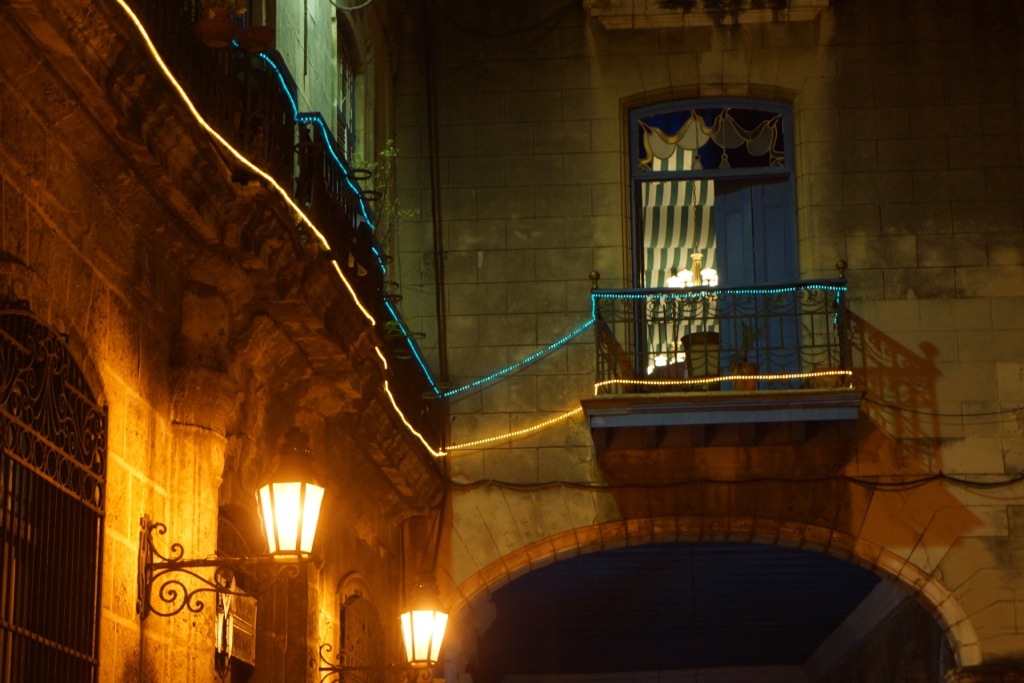
Back at the hotel, I prepare for a welcome shower, except there’s no water. I’m told there will be in half an hour. We’ll see.
Water. Shower. Good. In fact, muy bueno.
April 25
Okay, I’ll admit it, I’m starting to write this on April 22. Got to begin developing the mindset, and, besides, there are a few background matters to talk and think about, so here it goes.
First, thoughts about blogging. People ask me whether this doesn’t take an awful lot of time. Well, yes; but I think it’s worth it. For one thing, it provides a record of the trip in a way that the journals I used to keep did. But another, and perhaps more important reason, is that blogging forces you to think about things in ways that you might not otherwise think about them (or, at least, I would not).
You go into a trip with certain expectations, and those expectations are bound to color your experience. For me, Cuba is a great trip. It’s close, it’s in the same time zone, but at the same time it’s exotic. The title of this post, Dreaming in Cuban, is stolen from the title of the book by Cristina Garcia that I am currently reading. It’s quite a wonderful book, with the kind of magical realism that I like in Latin and South American writers. It also is written in very poetic language. It evokes some of the mystery that Cuba conjures in my mind – women smoking cigars, bulky vintage American cars, colonial architecture, romantic revolutionaries, and a once exotic nightlife. There also used to be a Jewish presence in Cuba that I hope to at least get a little taste of.
My early recollections of Cuba date back to the 1950s, when, like many US tourists seeking the sun, my parents traveled to Cuba. They returned well tanned and a bit intoxicated by their experience. Of course, Cuba also figures largely in some history that I recollect quite clearly – the Bay of Pigs invasion fiasco and the Cuban missile crisis which to me was the scariest time that we have lived through by a long shot. It took quaint historical events, such as blockades, out of the history books and put them on the front pages of newspapers and on TV screens. To many of us, it seemed like the end of the world as we knew it was a real possibility.
Of course, for 50 years, Cuba was out of bounds for travelers from the US. Only recently has there been some loosening of those restrictions. Now group trips are permitted, but only for cultural purposes. I am traveling with a small group from the Santa Fe Photography Workshop, on a cultural photography trip in which we will be meeting and talking with Cuban photographers. The trip is being led by Nevada Wier, the same person who led the trip that I took to Southwestern China last October and November. We will be a group of 12 people, nine from across the United States, two from Singapore and one from Belgium. The trip is not a workshop, so there will be no formal classes or instruction. However, traveling with Nevada and a group of enthusiastic photographers, I expect to learn quite a bit on the trip.
Carol would have signed on for the trip, too, but there was only one space available, so she became #1 on the waiting list four months ago, but nobody dropped out. As it turns out, she’s had pain in her hip and leg, so the trip would not have been a good idea, anyway. She’s meeting me in Miami at the end of the trip, where we’ll spend a weekend with good college friends.
I take an afternoon flight down to Miami, and shuttle over to Marriott Courtyard for an 8 PM briefing meeting with our group. Ironically, one of the people on the trip had developed severe back pain at the last minute and could not make the trip. Had we known earlier, Carol could have joined us. Damn. Most of the group retired to the bar for some drinks and food, but we disbanded by 10, because of our early start tomorrow. Seems like a very amicable group, all of whom have traveled with Nevada, some many times.
Well, I don’t leave until April 25 (actually, the 26th for Cuba), but I thought you’d better start getting ready. For starters, here’s a map.
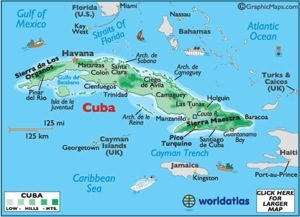
Notice a few things. If you never knew where Gitmo, much in the news, was, now you do, Southeast tip, almost as far as you can get from Havana. Jamaica and the Cayman Islands, both much smaller than Cuba (which is the largest island in the West Indies, about the size of Pennsylvania) are tucked to the South. Although you can’t tell from this map, Cuba is 90 miles South of Florida. And, gee, Cuba has its own little group of islands, including Isla de la Juventud. Of Cuba’s 11 million people, 2.1 million live in Havana.
And now, friends, a bit of (quite biased) history, edited very slightly by me, courtesy of infoplease. I apologize for the low brow source, but it’s really very convenient.
Arawak (or Taino) Indians inhabiting Cuba when Columbus landed on the island in 1492 died from diseases brought by sailors and settlers. By 1511, Spaniards under Diego Velásquez had established settlements. Havana’s superb harbor made it a common transit point to and from Spain.
In the early 1800s, Cuba’s sugarcane industry boomed, requiring massive numbers of black slaves. A simmering independence movement turned into open warfare from 1867 to 1878. Slavery was abolished in 1886. In 1895, the poet José Marti led the struggle that finally ended Spanish rule, thanks largely to U.S. intervention in 1898 after the sinking of the battleship Maine in Havana harbor.
An 1899 treaty made Cuba an independent republic under U.S. protection. The U.S. occupation, which ended in 1902, suppressed yellow fever and brought large American investments. The 1901 Platt Amendment allowed the U.S. to intervene in Cuba’s affairs, which it did four times from 1906 to 1920. Cuba terminated the amendment in 1934.
In 1933, a group of army officers, including army sergeant Fulgencio Batista, overthrew President Gerardo Machado. Batista became president in 1940, running a corrupt police state.
In 1956, Fidel Castro launched a revolution from his camp in the Sierra Maestra mountains. Castro’s brother Raul and Ernesto (Ché) Guevara, an Argentine physician, were his top lieutenants. The U.S. ended military aid to Cuba in 1958, and on New Year’s Day 1959, Batista fled into exile and Castro took over the government.
The U.S. initially welcomed what looked like a democratic Cuba, but within a few months, Castro established military tribunals for political opponents and jailed hundreds. Castro disavowed Cuba’s 1952 military pact with the U.S., confiscated U.S. assets, and established Soviet-style collective farms. The U.S. broke relations with Cuba on Jan. 3, 1961, and Castro formalized his alliance with the Soviet Union. Thousands of Cubans fled the country.
In 1961, a U.S.-backed group of Cuban exiles invaded Cuba. Planned during the Eisenhower administration, the invasion was given the go-ahead by President John Kennedy, although he refused to give U.S. air support. The landing at the Bay of Pigs on April 17, 1961, was a fiasco. The invaders did not receive popular Cuban support and were easily repulsed by the Cuban military.
A Soviet attempt to install medium-range missiles in Cuba—capable of striking targets in the United States with nuclear warheads—provoked a crisis in 1962. Denouncing the Soviets for “deliberate deception,” President Kennedy promised a U.S. blockade of Cuba to stop the missile delivery. Six days later, Soviet premier Nikita Khrushchev ordered the missile sites dismantled and returned to the USSR in return for a U.S. pledge not to attack Cuba.
The U.S. established limited diplomatic ties with Cuba on Sept. 1, 1977, making it easier for Cuban Americans to visit the island. Contact with the more affluent Cuban Americans prompted a wave of discontent in Cuba, producing a flood of asylum seekers. In response, Castro opened the port of Mariel to a “freedom flotilla” of boats from the U.S., allowing 125,000 to flee to Miami. After the refugees arrived, it was discovered that their ranks were swelled with prisoners, mental patients, homosexuals, and others unwanted by the Cuban government.
Russian aid, which had long supported Cuba’s failing economy, ended when Communism collapsed in eastern Europe in 1990. Cuba’s foreign trade also plummeted, producing a severe economic crisis. In 1993, Castro permitted limited private enterprise, allowed Cubans to possess convertible currencies, and encouraged foreign investment in its tourist industry. In March 1996, the U.S. tightened its embargo with the Helms-Burton Act.
In early 2003, Castro sent nearly 80 dissidents to prison with long sentences, prompting an international condemnation of Cuba’s harsh supression of human rights.
The Bush administration again tightened its embargo in June 2004, allowing Cuban Americans to return to the island only once every three years (instead of every year) and restricting the amount of U.S. cash that can be spent there to $50 per day. In response, Cuba banned the use of dollars, which had been legal currency in the country for more than a decade.
In July 2006, Castro—hospitalized because of an illness—temporarily turned over power to his brother Raúl and in Feb. 2008, the 81-year-old Fidel Castro ended 49 years of power when he announced his retirement. Raúl succeeded his brother.
The U.S. Congress voted in March 2009 to repeal the long-standing restrictions on Cuban-Americans visiting Havana and sending money into the country. President Obama has signaled a willingness to establish warmer ties with Cuba, a subtle acknowledgement that isolation has not been effective in forcing the Castro regime from power.
On April 19, 2011, Cuba made the most significant change to its leadership in over 50 years, by appointing José Ramón Machado to fill the second-highest position in the Communist Party. It was the first time since the 1959 revolution that someone other than the Castro brothers has been named to the position.
In late 2011, buying and selling cars became legal, Cubans were allowed to go into business for themselves in a variety of approved jobs, from accounting to food vendors, real estate could be bought and sold for the first time since the days immediately following the revolution and the government pardoned more than 2,900 prisoners.
January 29-30
We get a 3:45 AM FaceTime call from Phoebe. As reception is spotty, the call is short, but welcome. Hillary and driver drop us at the airport for our 1 1/4 hour flight to Bangkok.
Okay, so here’s a short summary of what the final entry was supposed to be. Met at the Hong Kong airport by our private car and whisked to the fabulous Four Seasons Hotel, one of the best in the world. A few hours to soak up a bit of Hong Kong’s atmosphere before going to the China Club, a private club that the concierge at the Four Seasons has arranged for us to have dinner at on the recommendation of a “foodie” relative of our travel agent in Chicago. Amazing meal and an opportunity to see a tea ceremony and pancake making. Back to our spacious, elegantly appointed room for a good night’s sleep prior to our car to the airport the next morning. It was to be a big splurge at the end of the trip, the details of which had been arranged for months.
And here’s what actually happened. About half way to Bangkok, Carol and I both begin not to feel well, and, by the time we hit Bangkok, we (especially me) feel really, really lousy. I’ll spare you the details of multiple vomiting and diarrhea, but let’s just say that it was neither fun nor pretty. We go via wheel chair, because I’m feeling weak, to see a doctor at the airport, who recommends that I go to a hospital in Bangkok. We decline, but permit him to give me a shot for nausea and other medication for dehydration and diarrhea.
There is no possible way I can get on a plane at this point, so we wind up spending about seven hours in the Cathay Pacific lounge in Bangkok, where we are extremely well looked after. A return visit to the doctor, and he signs a letter saying I’m okay to fly. Feeling better, but still happy to have a wheel chair to be transported around in, we take an evening flight to Hong Kong. The classy folks at Four Seasons cancel our dinner, car and room reservations, arrange for a hotel room at an airport Marriott and say that they hope that I feel better. In Hong Kong, we are met and I’m transported by a wheel chair to collect our luggage and take a shuttle bus (not a private car) to the Marriott, which is new, and more than adequate for our needs (it has a bed; two, actually, and free wifi, because I’m a Marriott Rewards member). Good night’s sleep and feel much better, but there’s no way I’m giving up my wheel chair at the Hong Kong airport.
Now aloft and about ten hours from home, a few reflections on our trip. We were so lucky and privileged to experience Myanmar in the way we did, because of Dotty. We definitely skipped some things that tourists would normally do and see, and I’m sure we would have enjoyed some, perhaps most, of that. But there’s no question in my mind that the trade off was more than worth it. We met people and did things that we’ll remember for as long as we’re still in the remembering business.
We saw a country at a unique time in it’s history. (In the International Tribune on the plane, I read an article saying that Myanmar had just revoked the law that prevented Damon from doing a meditation class for more than five people). There’s a sense of some hope, but there’s still a tenuousness to it all. The country seems subdued. Aside from the Indian wedding we crashed, we saw no overt joy. But we were treated with great warmth wherever we went. My sense of uneasiness is the degree to which the country’s hope depends on one person, Daw Aung San Suu Kyi. If she prevails in the 2015 elections, it may be possible to create an infrastructure that survives her. Perhaps the barn door is already unlocked. But nobody appears to be giddy at this point. And there’s a strong historical basis for that lack of giddiness.
Carol and I will undoubtedly remain in touch with Myanmar. There’s Dotty and Jim, for starters. And we hope to correspond with others we met, as well. Most hopefully, we expect to host our two wonderful young guides and travel companions, Hillary and Aung Lin Htet, when they come to the US for studies, which we hope will happen later this year. And we now have an even stronger foundation for our relationship with Arkar Hein at Nothwestern, having seen some of his country and met his family.
|
|
























